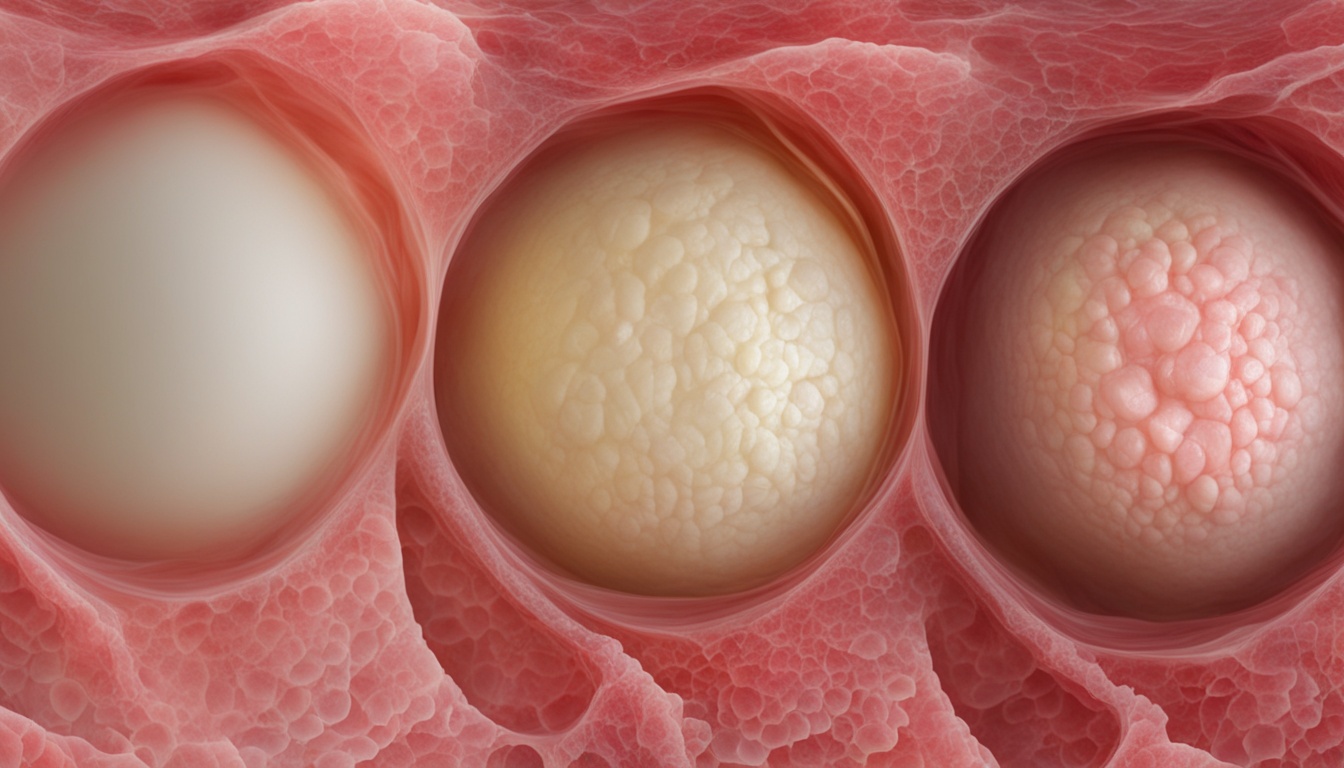Epidermoid cysts, or sebaceous cysts, are common on the skin. They appear on the body, like the face, head, and back. Normally, they are slow-growing and harmless.
If infected, they might cause pain and redness. Sometimes they need to be treated, especially if they cause cosmetic issues.
These cysts look like round bumps filled with a solid material. They range from 0.6 to 5cm in size. If they get infected, they can swell and hurt.
The exact reason for these cysts isn’t clear. One thought is that skin cells get trapped. Things like puberty, a past of acne, and too much sun might increase the risk. As well as skin damage.
Most often, epidermoid cysts don’t cause health issues. But in very rare cases, they could lead to certain skin cancers.
Key Takeaways:
- Epidermoid cysts, also known as sebaceous cysts, are slow-growing and often non-cancerous.
- They can develop on various parts of the body and usually do not cause symptoms.
- If infected, they may become swollen, red, and painful.
- Risk factors for epidermoid cysts include puberty, a history of acne, sun exposure, and skin lesions.
- Complications are rare, but they can lead to basal cell or squamous cell skin cancer in some cases.
Symptoms and Causes of Epidermoid Cysts
Epidermoid cysts, or sebaceous cysts, show various symptoms. It’s important to spot these symptoms early for the best chance of treatment. If you think you have a cyst or see these symptoms, see a doctor right away.
Symptoms of Epidermoid Cysts
The main sign of an epidermoid cyst is a round bump on your skin. These bumps can be found all over the body. They usually look white to yellowish and feel hard but are movable.
When these cysts get infected, they can hurt, swell, and turn red. If they burst, they might let out smelly yellow fluid.
Causes of Epidermoid Cysts
We don’t know exactly what causes epidermoid cysts. It seems they happen when skin cells get trapped under the skin and multiply, forming a cyst.
Various things can lead to these cysts. This might include going through puberty, having a lot of acne, spending much time in the sun, or having skin injuries. While most cysts are not a big problem, some might need to be treated by a doctor.
If you think you have an epidermoid cyst, it’s best to see a doctor. They can give you the right advice and care, which is important for your health.
Treatment Options for Epidermoid Cysts
The way we treat epidermoid cysts depends on their size, symptoms, and how they look. If a cyst is small, not causing any trouble, and looks okay, we might not need to treat it. But, if it grows, gets infected, or starts to hurt, we have ways to help.
Surgery to remove the cyst is the most common method. The doctor will carefully cut it out. They make sure to take the cyst and some tissue around it to stop it from coming back. This surgery is done with just a little numbing medicine. It might leave a small mark, but it often gets lighter with time.
Sometimes, we can try other things before surgery. This includes giving a shot in the cyst with corticosteroid or taking antibiotics by mouth. These can help with swelling or infection. But, they might not work for everyone or for a long time.
It’s crucial to talk to a doctor if you have an epidermoid cyst. They can give you a plan based on your situation. They might suggest surgery or another way to treat the cyst.

